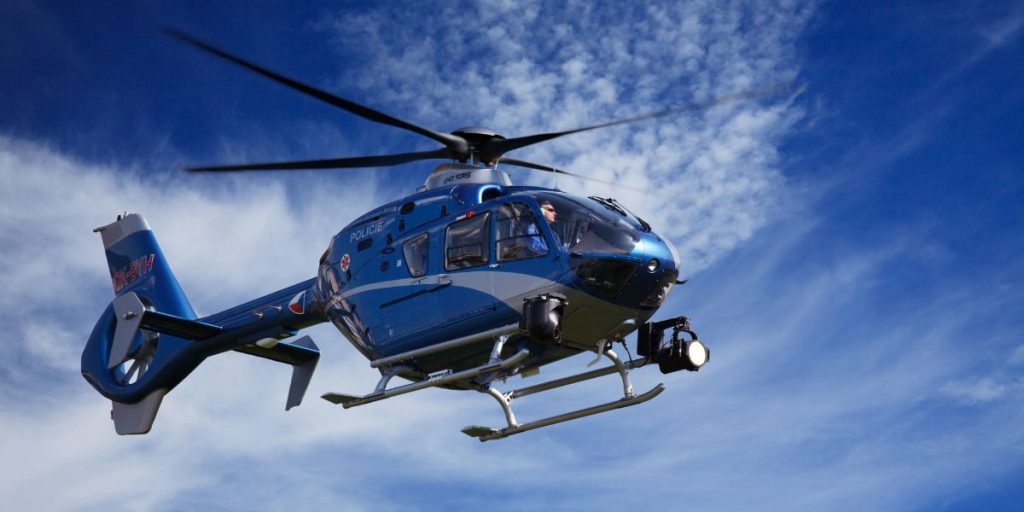Ever wondered what powers those spinning rotors above your head? The answer to whether helicopters use jet fuel isn’t as straightforward as you might think. It all depends on the type of engine under the hood.
From rescue missions soaring over mountain peaks to luxury rides above city skylines, helicopters need the right fuel to perform their magic. Understanding helicopter fuel isn’t just technical knowledge – it could save you money and help you make smarter aviation decisions.

The Simple Answer
Yes, many helicopters do use jet fuel – but not all of them. The fuel choice depends entirely on whether the helicopter has a turbine engine or a piston engine.
Think of it like cars: some run on gasoline, others on diesel. Helicopters work the same way, just with different aviation fuel types.
Turbine-Powered Helicopters: The Jet Fuel Users
Most modern, larger helicopters use turbine engines (also called turboshaft engines). These powerful machines run on aviation turbine fuel, commonly known as jet fuel.
What Type of Jet Fuel?
Turbine helicopters typically use:
- Jet A (common in the United States)
- Jet A-1 (used internationally)
Both fuels are kerosene-based and designed to handle extreme temperatures and high-pressure conditions. They’re colorless to light straw-colored and have a distinct diesel-like smell.
Why Turbine Helicopters Choose Jet Fuel
Jet fuel offers several advantages for helicopter operations:
- Temperature stability: Works reliably in extreme cold
- High energy density: More power per gallon
- Better performance: Ideal for heavy-lifting operations
- Longer flight times: More efficient for extended missions
Piston-Powered Helicopters: The Aviation Gasoline Users
Smaller helicopters, especially those used for training or personal flying, often have piston engines. These aircraft fuel systems run on aviation gasoline, or “Avgas.”
Common Avgas Types
The most popular helicopter fuel for piston engines is:
- Avgas 100LL (Low Lead)
- Avgas 100
- Avgas 82UL (Unleaded)
Color-Coded for Safety
Unlike jet fuel, aviation gasoline comes in different colors for easy identification:
Fuel Type | Color | Lead Content |
Avgas 100LL | Blue | Low lead |
Avgas 100 | Green | High lead |
Avgas 82UL | Purple | Unleaded |
This color coding prevents dangerous fuel mix-ups during refueling operations.
Helicopter Fuel Types: A Side-by-Side Comparison
Turbine vs. Piston: The Key Differences
Turbine Helicopters:
- Use jet fuel (Jet A/A-1)
- Higher fuel consumption
- More expensive to operate
- Better for commercial operations
- Smoother, quieter flight
Piston Helicopters:
- Use aviation gasoline (Avgas)
- More fuel efficient
- Lower operating costs
- Popular for training
- Ideal for personal use
Fuel Efficiency: How Much Do Helicopters Actually Consume?
Helicopter fuel consumption varies dramatically based on size and helicopter engine type.
Piston Engine Helicopters
- Small helicopters: 6-16 gallons per hour
- Example: Robinson R22 burns about 8 gallons per hour
Turbine Engine Helicopters
- Medium helicopters: 20-50 gallons per hour
- Large helicopters: Up to hundreds of gallons per hour
- Extreme example: MIL MI-26 consumes 1,000 gallons per hour
Do Helicopters and Airplanes Use the Same Fuel?
Absolutely! Aircraft fuel standards are universal across aviation:
- Piston aircraft (planes and helicopters) both use Avgas
- Turbine aircraft (jets and helicopters) both use jet fuel
This standardization makes refueling operations simpler and more cost-effective for airports worldwide.
The Future: Sustainable Aviation Fuel
The aviation industry is moving toward greener alternatives. Sustainable Aviation Fuel (SAF) can reduce carbon emissions by up to 80% compared to traditional jet fuel.
SAF can blend seamlessly with conventional helicopter fuel types without requiring engine modifications. However, higher production costs and limited availability remain challenges.
Why Helicopters Are Less Fuel Efficient Than Planes
Helicopters consume more fuel than airplanes due to their unique design. Unlike planes that use wings for lift, helicopters generate all lift through their rotors.
Additional factors affecting helicopter fuel efficiency:
- Slower flight speeds
- Energy required for hovering
- Increased drag from rotor systems
Making the Right Fuel Choice
When choosing between turbine and piston helicopters, consider:
Choose Turbine (Jet Fuel) For:
- Commercial operations
- Heavy lifting tasks
- Long-distance flights
- Cold weather operations
- Multiple passengers
Choose Piston (Avgas) For:
- Flight training
- Personal use
- Budget-conscious operations
- Short local flights
- Simple maintenance requirements
Safety First: Fuel Handling Considerations
Aviation fuel requires careful handling due to safety concerns:
- Avgas contains tetraethyl lead (toxic substance)
- Proper protective equipment is essential
- Color coding prevents dangerous mix-ups
- Professional fuel handlers ensure safe operations
Get Quality Aviation Fuel at the Best Price
Buy the fuel at the best price on aviationsolutions.co – your trusted source for both jet fuel and aviation gasoline with competitive pricing and quality assurance.
Conclusion
So, do helicopters use jet fuel? The answer is: it depends on the helicopter engine type. Turbine-powered helicopters rely on jet fuel for their superior performance and reliability, while piston helicopters use aviation gasoline for cost-effective operations.
Understanding these helicopter fuel types helps explain why different helicopters serve different purposes. Whether you’re considering helicopter ownership, planning a flight, or simply curious about aviation, knowing the fuel differences gives you insight into helicopter operations.
The next time you see a helicopter overhead, you’ll know that its fuel choice reflects its mission, size, and intended use in the diverse world of aviation.
About Aviation Solutions
Your trusted global partner for aviation fuel and charter services. We deliver reliability, efficiency, and 24/7 support to keep you flying.
Copyright © 2025 Aviation Solutions, a part of Abdulla Bin Zayed Investment Group. All Rights Reserved.
